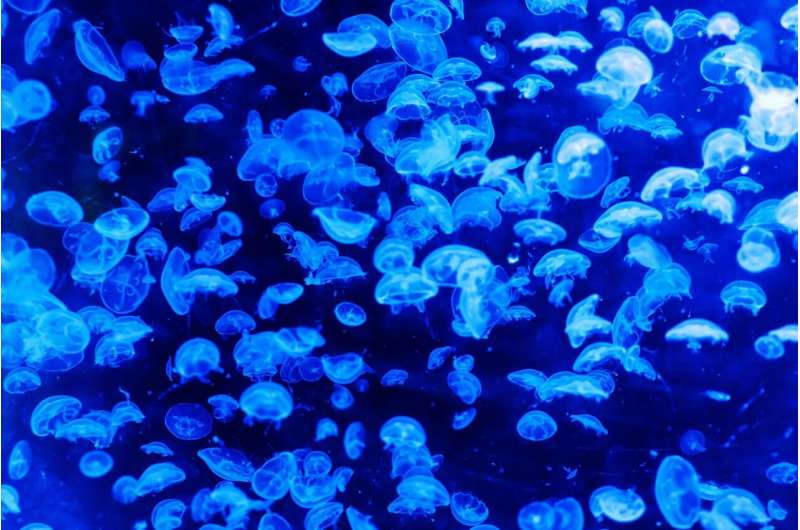November 6, 2020 report
'Resource-driven' selection identified as a purifying selective force connected to environmental nutrient availability

A pair of researchers at Rockefeller University has identified "resource-driven" selection as a purifying selective force that can be connected to environmental nutrient availability. In their paper published in the journal Science, Liat Shenhav and David Zeevi describe their study of the genetic factors at play as organisms are optimized to face environmental challenges. Martin Polz and Otto Cordero with the University of Vienna and MIT, respectively, have published a Perspective piece in the same journal issue outlining the work by the team in New York.
Logic suggests that as organisms evolve over time in response to environmental changes, changes to their genomes must occur, as well. But what is still unclear is how such changes to the genome arise. In this new effort, the researchers looked at the way the genomes of some sea creatures have changed to allow them to survive in two vastly different environments: parts of the ocean near the surface versus the dark areas below.
The work involved obtaining samples of marine microbes from sites all around the globe and studying both their genomes and the evolutionary changes they have undergone to live in such different types of environments. Most specifically, they looked at how resource scarcity can impact the evolution of protein sequences and nucleotides.
In the open ocean, the surface is bombarded with sunlight, and therefore has low levels of nitrogen and high levels of organic carbon. The organisms that live there, such as algae, consume the nitrogen and produce organic carbon. When the algae (and other organisms) die, they fall into the darkness below, where they are consumed by heterotrophic bacteria. The end result is an increase in nitrogen and a decrease in organic carbon.
Prior work has shown a shift in guanine-cytosine (GC) levels in the marine creatures that live in the ocean. Those that live in areas of low nitrogen tend to have lower levels of GC than do those living in areas where nitrogen levels are higher. The genetic work by the researchers involved taking a closer look at this connection and finding associations between environmental conditions and the shift in GC levels. They were able to see that "resource-driven" selection was a selective force that could be associated with an environmental condition—namely nutritional availability.
More information: Shenhav et al., Resource conservation manifests in the genetic code. Science (2020). DOI: 10.1126/science.aaz9642
Journal information: Science
© 2020 Science X Network


















